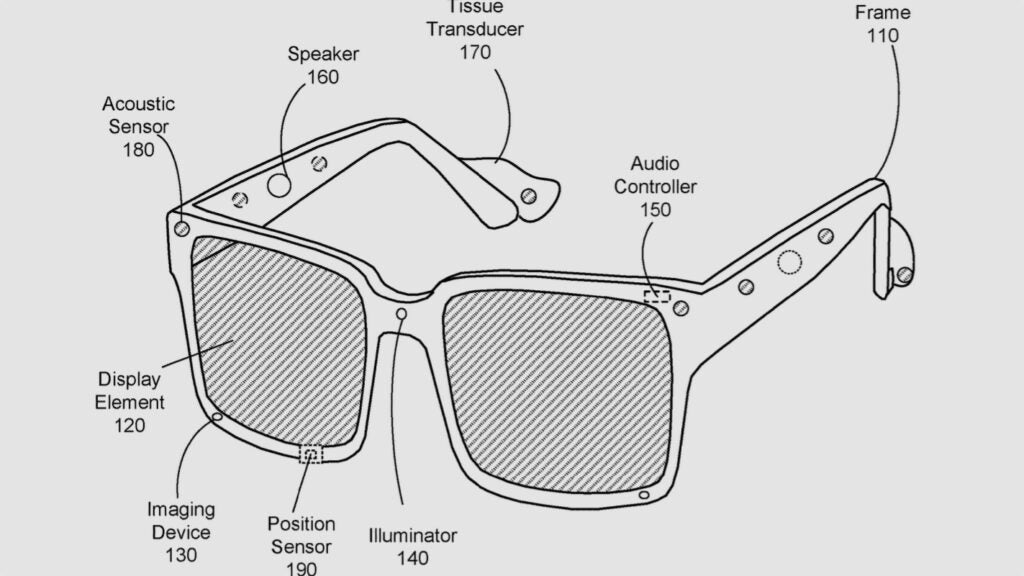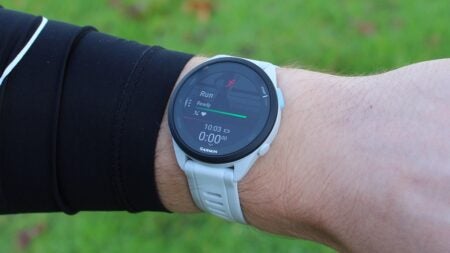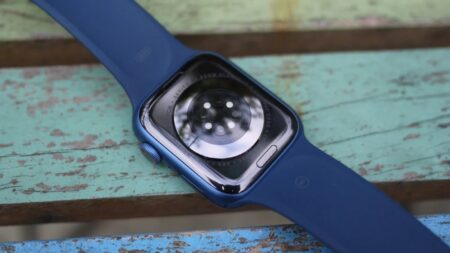Meta is working on a "communication energy score" for future smartglasses that could provide custom music based on your mood.
The new technology would customize audio content delivered to users, based upon heart rate and blood pressure readings.
In a new patent filing pertaining to smart glasses or a mixed reality headset, Meta pitches a system that plays more soothing tunes when a wearable device detects a spike in heart rate, blood pressure, or even a subtle change in tone of voice potentially indicating low mood.
The tech could potentially make its way into a pair of Meta Ray-Ban smart glasses, which already can play audio content and handle voice calls to a good standard, thanks to built-in speakers and microphones.
Meta’s filing with the United States Patent Office explains how biometric sensors would be used to determine a “communication energy score” that would dynamically alter the “presentation of audio” or “specify acoustic parameters based on changes in the user’s condition.”
This might account for a high tempo playlist being selected for exercise, or more relaxing music when resting. Certain psychological states may also result in a negative reaction to music. Whereas users currently have to alter the audio manually, Meta’s system would do it manually.

The filing reads: “To simplify the modification of audio presentation for a user that accounts for a condition of the user, a wearable device obtains biometric data of the user from one or more sensors and determines a communication energy score for the user based on the biometric data.
“The biometric data may include characteristics of the user’s voice determined from captured audio including the user’s voice. Alternatively or additionally, the biometric data includes physiological data of the user captured by one or more physiological sensors.”
The psychological data could be provided by heart rate, blood pressure, respiratory rate, electrocardiogram, body temperature or “other” psychological data, the patent adds. Meta says its trained model would determine the communication energy score, which would then modify the audio presented to the user.
The patent adds: “To simplify the modification of audio presentation for a user that accounts for a condition of the user, a wearable device obtains biometric data of the user from one or more sensors and determines a communication energy score for the user based on the biometric data.”
The patent doesn’t specifically mention the hardware would contain the sensors necessary to detect the biometric state, so it may be that Meta’s tech relies on connection with a companion wearable, such as a smartwatch or fitness tracker.
However, the audio element would be handled with aplomb, judging by Meta’s previous forays into smart glasses and mixed-reality headsets.
In Wareable’s review of the Meta Ray-Ban sunglasses our reviewer pointed out the impressiveness of the open-ear audio quality.
Wareable editor-in-chief James Stables wrote: “The audio quality surprised us in terms of the richness and depth – and it produced a much bassier sound than we expected. While it’s certainly not built for audiophiles, we had no problem walking around town on a sunny day enjoying music on the Ray-Bans.”
Meta has also improved the audio in its latest-generation Quest 3 mixed reality headset, offering an impressive spatial audio experience with clear and loud sound.



